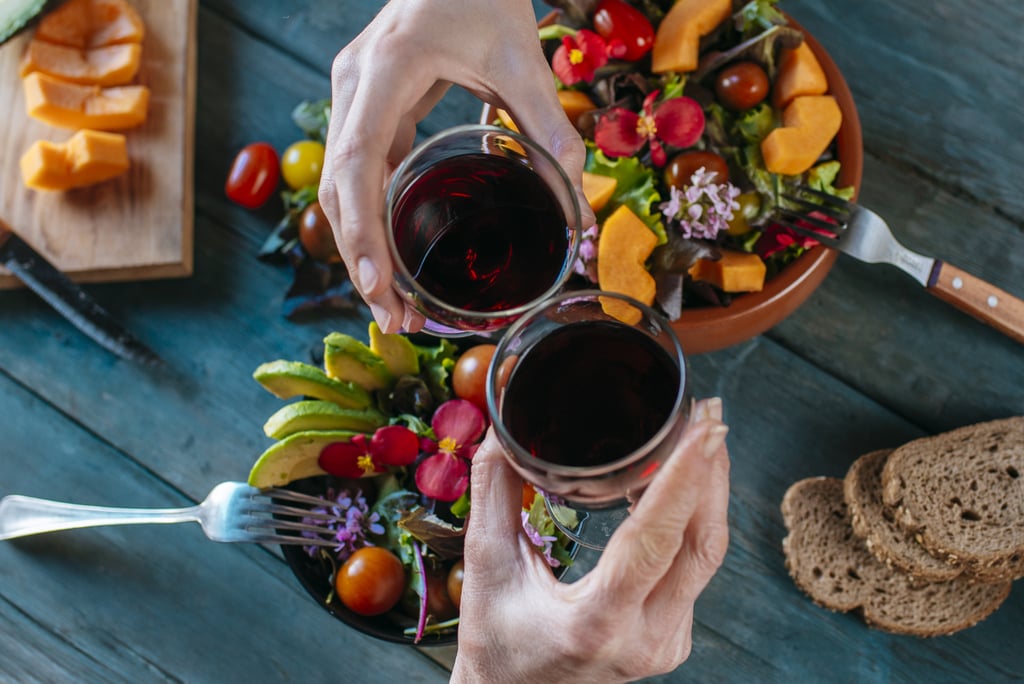How to Eat Like You're Living in a Blue Zone
TikTok Is Turning to “Blue Zones” For Healthy Meal Inspo

After spending a month in a blue zone, dietitian and content creator Maggie Hennigan felt so good, she decided to start re-creating some of her favourite blue zone meals at home. "As a registered dietitian, I'm challenging myself in 2024 to make my life as much like a blue zone as possible, and obviously that includes food," Hennigan shared in a January TikTok. Blue zones — including Nicoya, Costa Rica, where Hennigan visited — are areas where people consistently live longer (and healthier). The good news is, you don't have to live in an actual blue zone to re-create some of the most commonly consumed foods.
Considering that only about 20 percent of our lifespan is dependent on genetics, Hennigan might be on to something with her blue zone meals. "While there are a variety of factors that could contribute to the longer-than-average lifespan in these populations, the foods they eat could very well play a role in the longevity they enjoy," says Amanda Blechman, RD and Director of Health & Scientific Affairs at Danone North America. "In general, eating more plant-based and nutrient-dense foods like vegetables, fruits, whole grains, high-quality dairy products, and fortified soy milks can increase one's intake of nutrients that we often fall short on here in the US."
If you can't visit an actual blue zone, but still want to reap the longevity benefits, we rounded up some easy blue zone-inspired recipes to get you started. Read on for all the blue zone meal inspo, featuring tips from registered dietitians.
Where Are the Blue Zones?
Some of the most well-known blue zones include:
- Ikaria, Greece
- Loma Linda, California
- Sardinia, Italy
- Okinawa, Japan
- Nicoya, Costa Rica
What Foods Do They Eat in Blue Zones?
The exact ingredients can vary based on location, but generally speaking, blue zones do share some dietary similarities. "While each blue zone has its own traditions and ways of preparing food, all follow a predominantly plant-based eating pattern that emphasises foods like beans, whole grains, vegetables, fruits and nuts," Blechman says. Expect to see colourful plates filled with nutrient-dense foods like dark leafy greens, berries, and legumes like beans, chickpeas, and lentils, says Wendimere Reilly, RD and member of the Nature's Sunshine scientific advisory board. Whole grains (including oats, barley, quinoa, and brown rice) are also blue zone staples, along with several types of nuts and seeds. "Flavour is enhanced from olive oil, herbs, and spices such as turmeric, cinnamon, oregano, cumin, rosemary, and thyme," Reilly says. Animal-based foods like eggs, fish, and fermented dairy products like kefir and yoghurt complement the rest of the diet.
It comes as no surprise that the blue zone drink of choice is water. That said, beverages like coffee, tea, and red wine are also enjoyed in blue zones.
What Foods Do Blue Zones Avoid?
Moderate consumption is key, especially when it comes to meat. Blechman notes that most blue zones limit their meat intake to small servings five times a month. "That's a lot less than we tend to consume as part of the average American diet, which is more likely to include meat regularly, even every day," she says. "They also tend to consume significantly less added sugar than most Americans, though they don't eliminate it completely and include it mindfully into their day."
What Are the Benefits of Eating Like Blue Zones?
Common blue zone foods have nutrients people within the US are often missing, Blechman explains. This includes fibre, calcium, vitamin D, and potassium. Eating common blue zone foods ingredients like fruits, vegetables, nuts, and soy can also promote better heart health. "A recent study also found that a flexitarian eating pattern — or one that is abundant in plants while including nutritious animal foods in moderation, similar to what is embraced in the blue zones — was associated with the highest gut microbiome alpha diversity, when compared to the standard American diet," Blechman says. Reilly notes this could be thanks to fermented foods like sourdough, sauerkraut, kimchi, and yoghurt. Better gut health can contribute to better digestion, increased immunity, reduced inflammation, and even improved mood.
Blue zone ingredients are also great for metabolic health, Reilly says, improving longevity by supplying our cells with energy. "There is ample evidence supporting the consumption of high fibre, antioxidant rich foods such as vegetables, legumes, and whole grains to help improve blood sugar management, reduce the risk of type 2 diabetes and cardiovascular disease, enhance sleep quality, promote gut health, and reduce inflammation," she says. Blue zone eating is fairly similar to the flexitarian diet, which is generally safe for most people. However, according to the Cleveland Clinic, you may want to watch out for vitamin B12, zinc, and calcium deficiencies. People with digestive issues like IBS may also find the transition more difficult, so make sure to consult your healthcare provider before making any major changes.
Tips For Eating Like Blue Zones
If you want to turn your kitchen into a mini blue zone, the experts suggest starting small. "A simple way to begin is by dedicating one day per week to plant-based eating and gradually transitioning animal proteins to smaller side portions during the rest of the week," Reilly says. Another major part of the blue zone lifestyle is your mindset. "My advice if you're looking to make blue zone-inspired meals at home is to focus on nutritious foods to add as opposed to foods to avoid," Blechman says. "When it comes to specific foods, beans are huge in the blue zones, so making them a staple in some of your go-to recipes can be a good place to start adding a little blue zone inspiration to your day."
Some of Blechman's favourite ideas include swapping kidney beans for meat in chili, adding chickpeas to your salad, and making a three-bean salsa dip. For more fruits and veggies, she suggests making a smoothie to quickly pack in more nutrition. "I like to make mine with frozen fruit, some kind of green veggie like a handful of spinach, and soy milk for a plant-based source of complete protein," she says. Blue zone snacks might include nuts and a fermented dairy product like yoghurt (or a plant-based alternative). Just remember that "blue zone eating is a lifestyle not a diet," as Reilly says. "Choose more plant based whole foods, less ultra-processed foods and added sugars. The goal is delicious, nutritious and most importantly, sustainable," she says.
To really embrace the blue zone ethos, Blechman encourages you to share meals with friends and family. "Celebrating connection and the joy of delicious food is a cornerstone of the blue zone lifestyle and one I wholly support as a registered dietitian," she says. Read on for more blue zone meal ideas, with recipes for better health and longevity.
Chandler Plante is an assistant editor for POPSUGAR Health & Fitness. Previously, she worked as an editorial assistant for People magazine and contributed to Ladygunn, Millie, and Bustle Digital Group. In her free time, she overshares on the internet, creating content about chronic illness, beauty, and disability.








